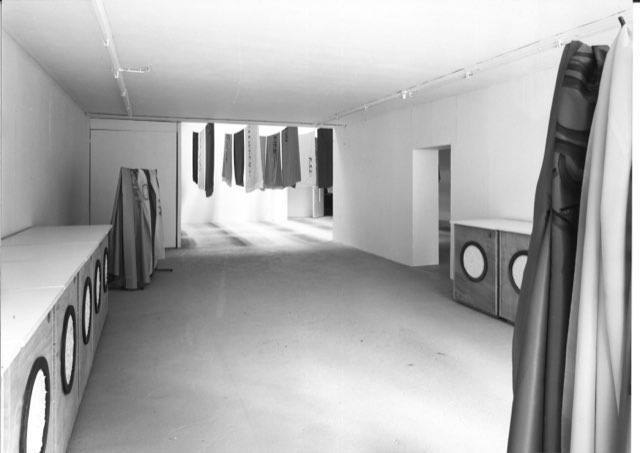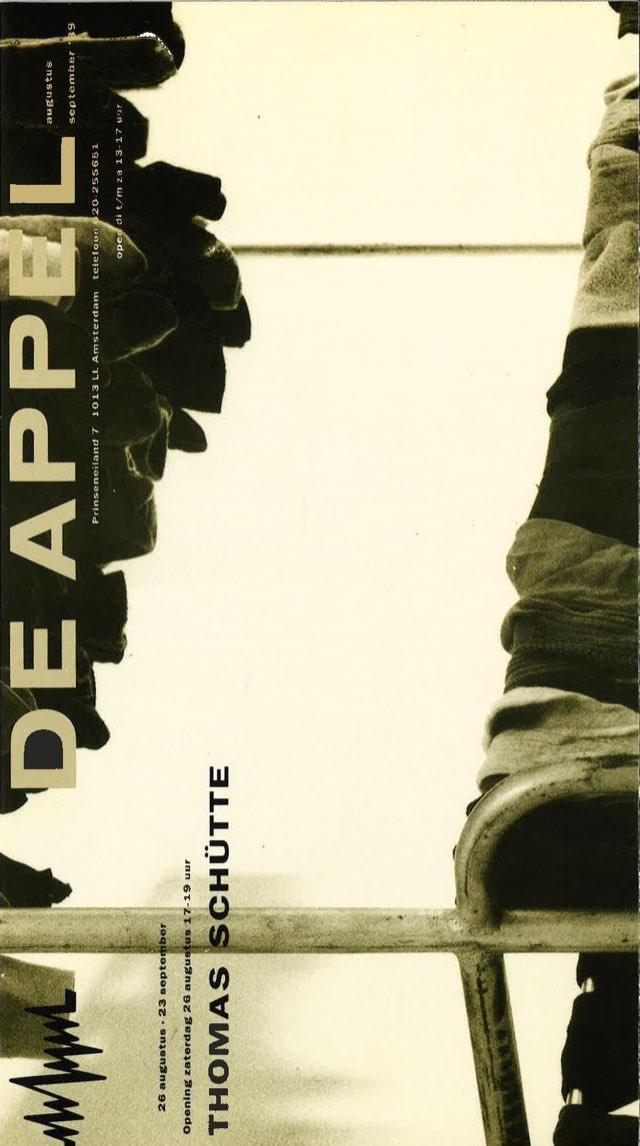Thomas Schütte "Mohr's Life & The Laundry"
26.08–23.09.1989
de Appel, Prinseneiland 7, Amsterdam
de Appel, Prinseneiland 7, Amsterdam
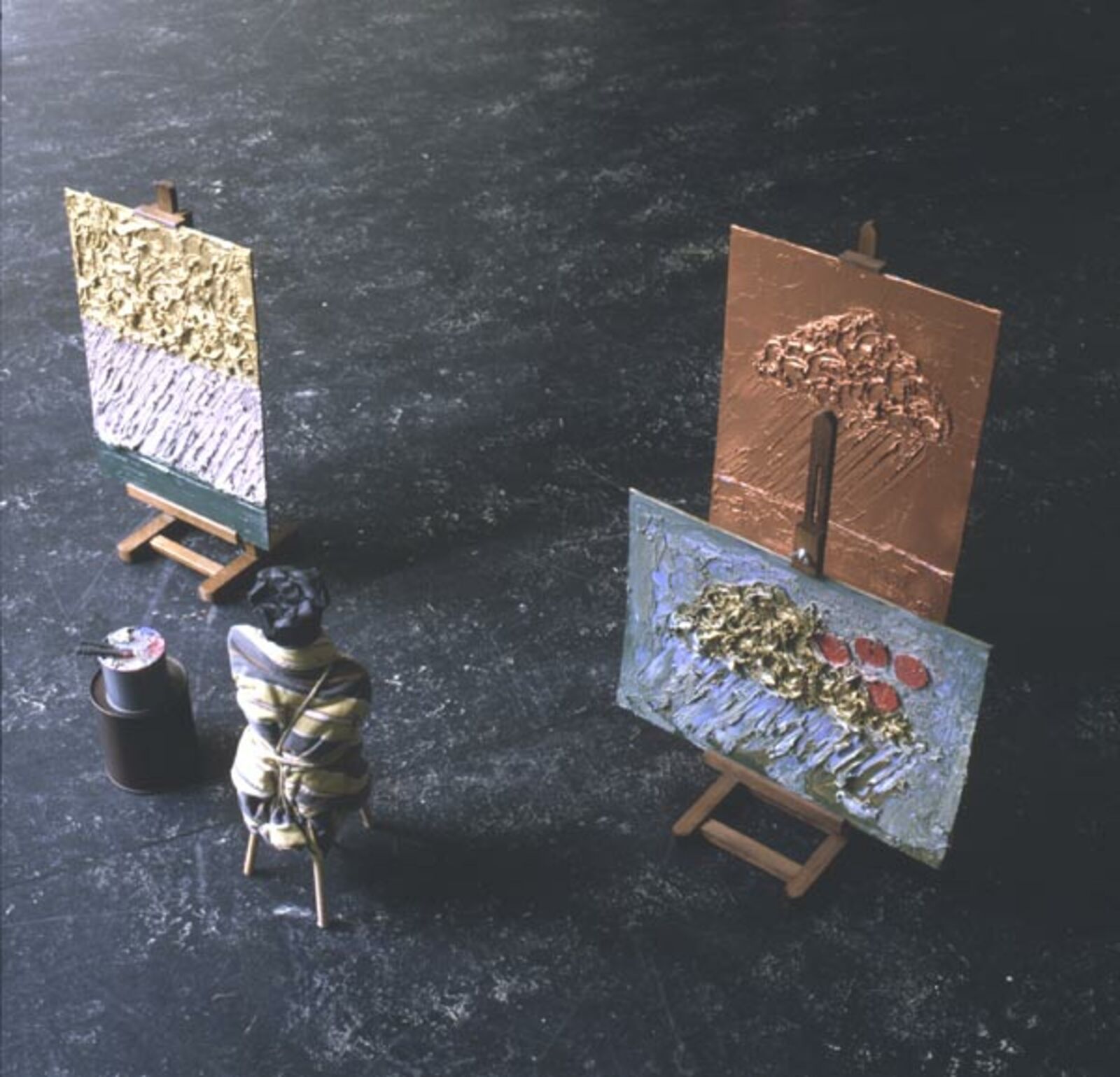
Mohr’s Life II
© Tom Haartsen, Ouderkerk aan de Amstel
© Tom Haartsen, Ouderkerk aan de Amstel
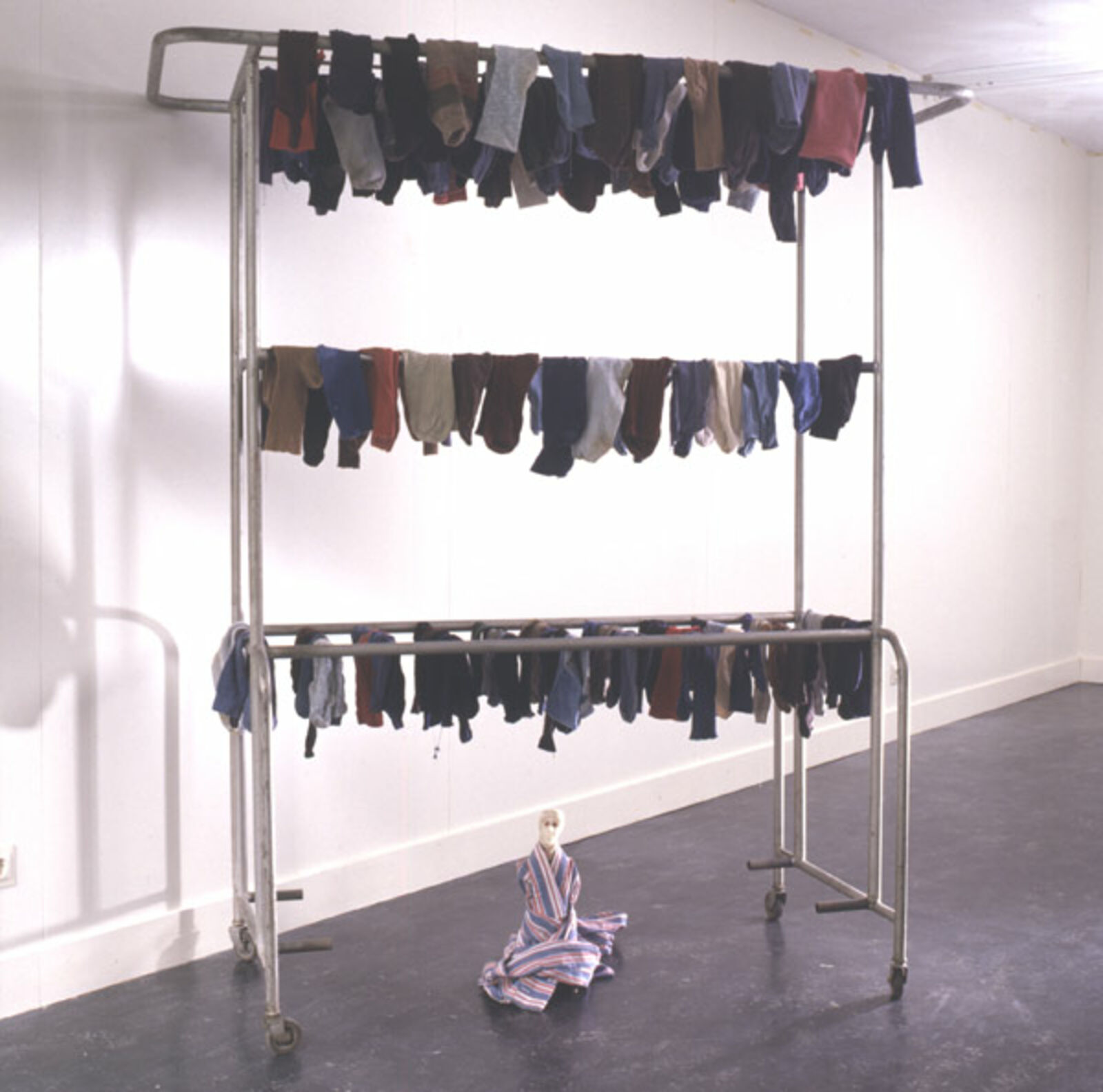
Mohr’s Life I
© Tom Haartsen, Ouderkerk aan de Amstel
© Tom Haartsen, Ouderkerk aan de Amstel
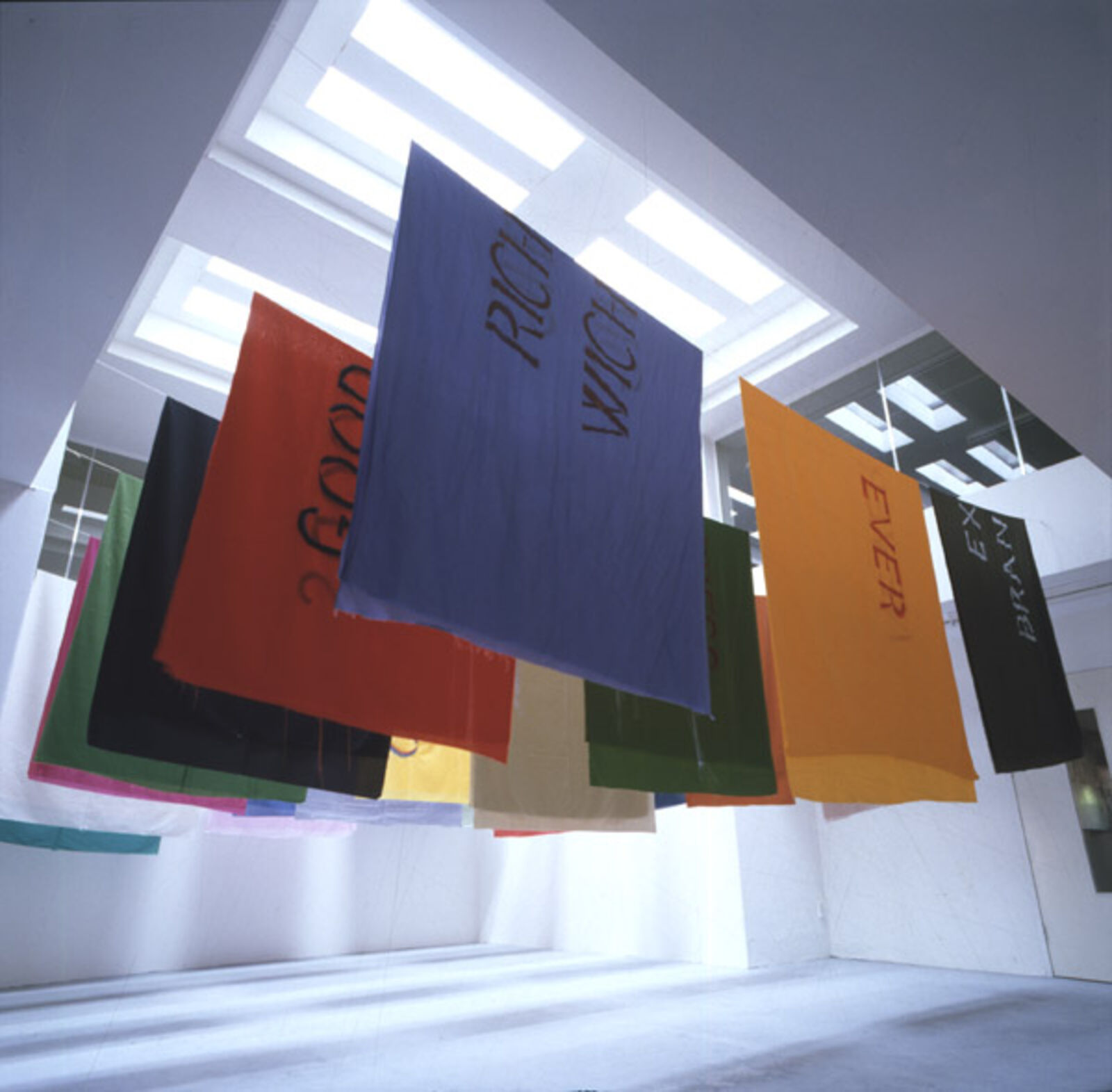
The Laundry I
© Tom Haartsen, Ouderkerk aan de Amstel
© Tom Haartsen, Ouderkerk aan de Amstel
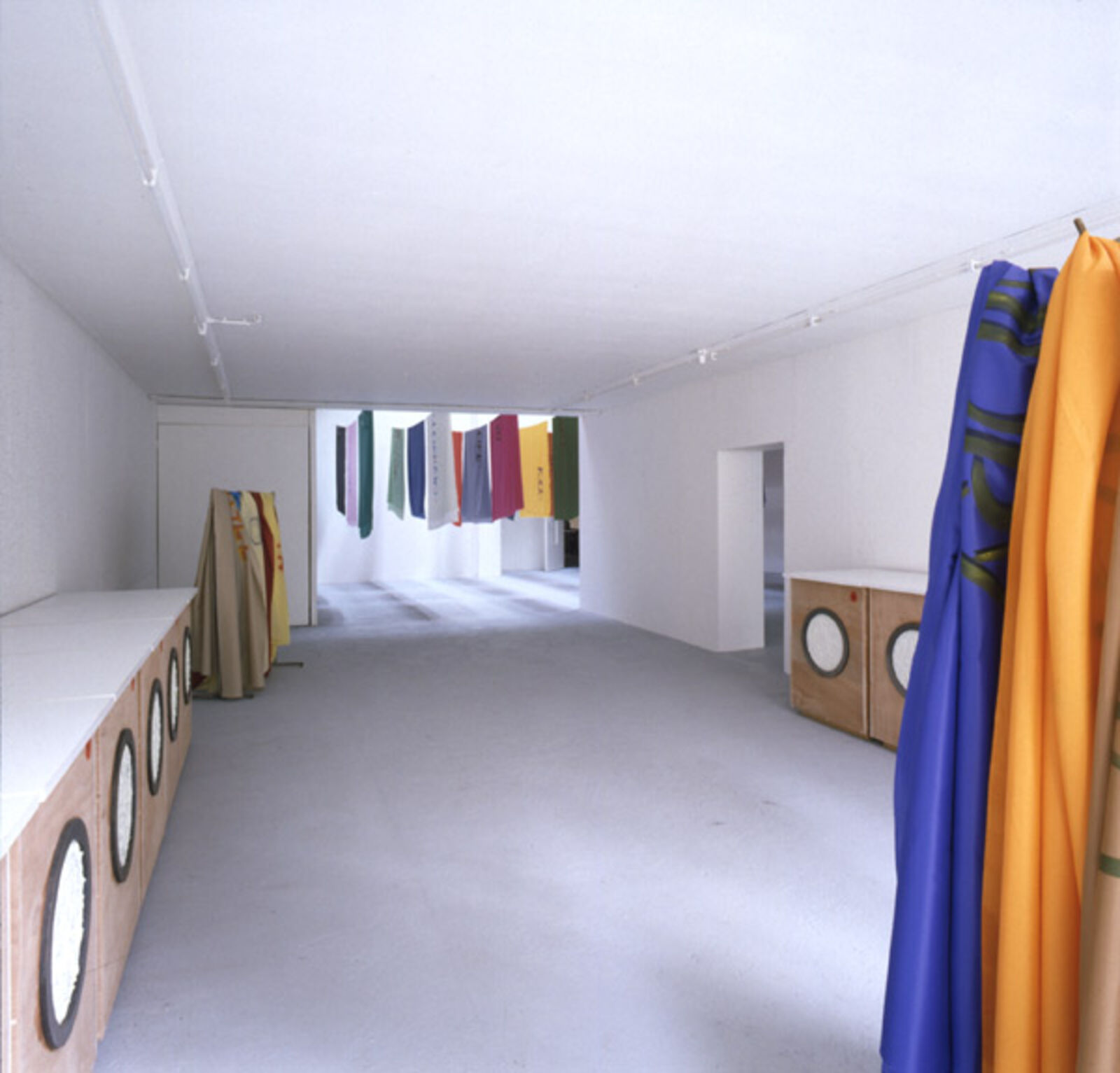
The Laundry II
© Tom Haartsen, Ouderkerk aan de Amstel
© Tom Haartsen, Ouderkerk aan de Amstel
‘Thomas Schütte (1954) works with various techniques and has built up a broad but coherent oeuvre: water colours, drawings, maquettes, models, large and small-scale sculpture; he has developed in all these different directions but prefers to mix the various art forms together. Here, he adopts a theatrical approach so as to involve the entire space in the mise en scène with the spectator as a component part of the presentation. He often introduces differences of size and scale: a sculpture of 'regular' dimensions is suddenly rendered colossal when placed next to a miniature figure. A small chair or a ladder leaning against a house, a bunker on a table, Schütte's forms hover between reality (the realized sculpture) and utopia (a model for something that could be produced some day). The work has different levels of meaning and frequently involves texts. The installation to be shown at De Appel consists of a lot of sheets of text that are hung in the space, billowing and colourful like washing in Italy. The texts vary from ‘TTTT RAUM’ to ‘DEUTSCHE BANK’ and ‘NEVER EVER’ and are sometimes written in different tints. In addition there are ten sculptures that look like the stage set of a launderette. The work is called The Laundry which heightens the feeling that the texts have been taken out of the washing machine and hung out to dry. Do these machines act like memory where the texts have faded, or where old meanings are washed out completely? All this is reminiscent of Schütte's earlier work such as Das Bad, a 1984 sculpture that consists of a white canvas on the wall which bears the work's title and a number of open wooden forms that look like washing baskets. He refuses to confirm or deny the question of whether his work like Beuys' and Fabro's (both of whom used pools and baths) alludes to concepts such as 'purification' (in the sense of catharsis). However, between the lines he implies that the concept certainly does play a role although personally he finds the word too lofty. The second part of the installation, Mohr's Life, is based on a play on words: Mohr's Life is an approximate anagram for H. Morel & Fils, the original name of the building where Philip Nelson recently opened his gallery in Lyon. Nelson produced the installation and Schütte requested that he might use the letters from the front of the building. This resulted in the curious name 'Möfflers & I’ and later in the Moor which Schütte uses as the personification of the artist complete with easel and sitter. Everything is in miniature and is placed under a clothes-rack with dozens of damp socks reminiscent of the wash in The Laundry. The artist as servant of the art world? If Schütte's work seems anecdotal, it remains enigmatic: it is full of hidden meanings and associative possibilities and the spectator is left free to project his personal world. In formal terms, these world views are typical of Schütte, metaphors for those situations and concepts in art which he is constantly dealing with.’ (‘Thomas Schütte’, Newsletter De Appel, 4 (1989) 4.)
Catalogue:
Thomas Schütte, Amsterdam (De Appel) / Frankfurt (Portikus) 1989. Text: Saskia Bos, Kasper König. German & English. 40 Pages: 16 f.c., 11 b.w., 16.5 x 22.5 cm. Softcover. SOLD OUT
